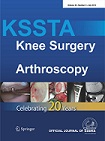
ARTHROPLASTY
High-flex TKA provides small increase in max ROM over conventional TKA
Knee Surg Sports Traumatol Arthrosc. 2015 Jun;23(6):1610-2114 randomized controlled trials reporting postoperative range of motion outcomes were selected for inclusion in this meta-analysis. The purpose of this study was to analyze the clinical outcomes of high-flex total knee arthroplasty (TKA) as compared to conventional prostheses in an updated meta-analysis of high-quality clinical trials. Results found that the high-flex TKA group displayed 2 degrees more mean max knee flexion and improvements in knee society score. However, It should be noted that the improvements were minute and may not represent clinically significant findings. No significant differences were noted in the hospital for special surgery scores, SF-36, complications, or revisions.
Unlock the full ACE Report
You have access to {0} free articles per month.Click below to unlock and view this {1}
Unlock NowCritical appraisals of the latest, high-impact randomized controlled trials and systematic reviews in orthopaedics
Access to OrthoEvidence podcast content, including collaborations with the Journal of Bone and Joint Surgery, interviews with internationally recognized surgeons, and roundtable discussions on orthopaedic news and topics
Subscription to The Pulse, a twice-weekly evidence-based newsletter designed to help you make better clinical decisions
Exclusive access to original content articles, including in-house systematic reviews, and articles on health research methods and hot orthopaedic topics
Or upgrade today and gain access to all OrthoEvidence content for just $1.99 per week.
Already have an account? Log in


Subscribe to "The Pulse"
Evidence-Based Orthopaedics direct to your inbox.
{0} of {1} free articles
Become an OrthoEvidence Premium Member. Expand your perspective with high-quality evidence.
Upgrade Now












































































